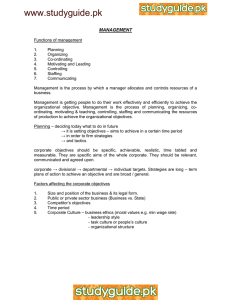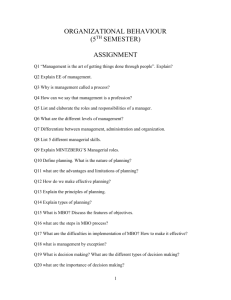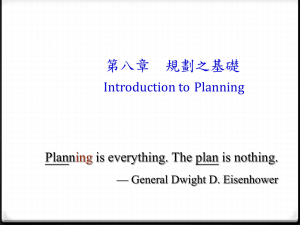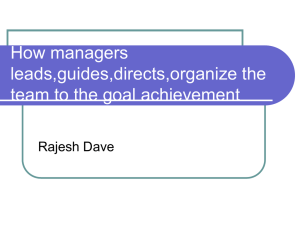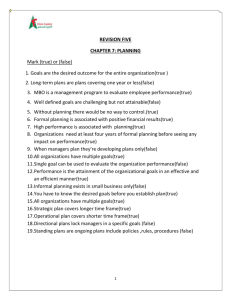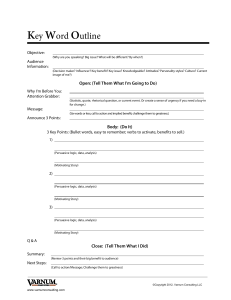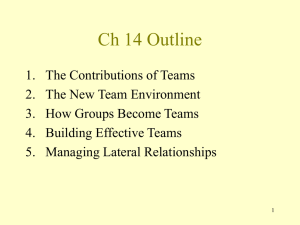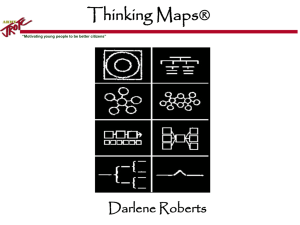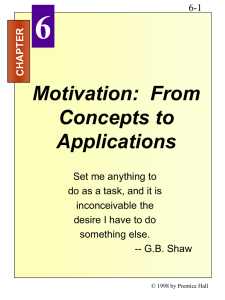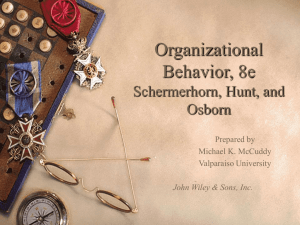Organizational Behavior 10e
advertisement
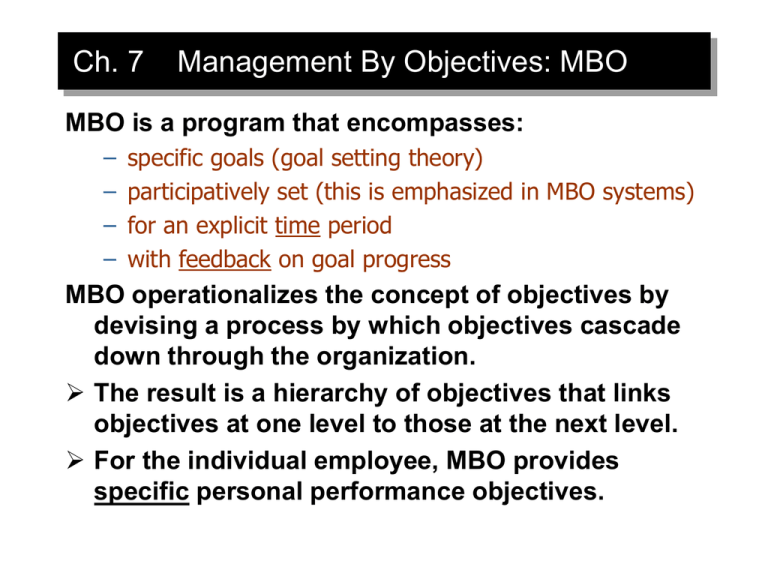
Ch. 7 Management By Objectives: MBO MBO is a program that encompasses: – – – – specific goals (goal setting theory) participatively set (this is emphasized in MBO systems) for an explicit time period with feedback on goal progress MBO operationalizes the concept of objectives by devising a process by which objectives cascade down through the organization. The result is a hierarchy of objectives that links objectives at one level to those at the next level. For the individual employee, MBO provides specific personal performance objectives. Cascading of Objectives What Are Employee Recognition Programs? Programs that use multiple sources and recognizes both individual and group accomplishments. Linking Programs and Reinforcement Theory Consistent with the reinforcement theory, rewarding a behavior with recognition immediately following that behavior is likely to encourage its repetition. Employee Recognition Programs in Practice In contrast to most other motivators, recognizing an employee’s superior performance often costs little or no money, making them highly attractive to industry. What are Employee Involvement Programs A participative process that uses the entire capacity of employees and is designed to encourage increased commitment to the organization’s success. Examples of Employee Involvement – Participative Management – Representative Participation – Work Councils – Board Representatives – Quality Circles – Employee Stock Ownership Plans (ESOPs) *Note: these strategies use concepts found in Theory X and Y, the two-factor theory, and needs (i.e. N achievement) and ERG. These approaches are popular around the world. Variable Pay Programs Programs where a portion of an employee’s pay is based on some individual and/or organizational measure of performance. – piece-rate pay plans – profit-sharing plans – gainsharing plans Linking Variable-Pay Plans and Expectancy Theory – Evidence supports the importance of this linkage, especially for operative employees working under piece-rate systems. – Group and organization wide incentives reinforce and encourage employees to sublimate personal goals for the best interests of their department or organization. – Many of these plans are used in organizations around the world. Again, be careful – some involve risk (and not all employees nor employers are risk takers!) Skill-Based Pay Plans Pay levels based on how many skills employees have or how many jobs they can do… Benefits of Skill-based Pay Plans: 1. Provides staffing flexibility. 2. Facilitates communication across the organization. 3. Lessens “protection of territory” behaviors. 4. Meets the needs of employees for advancement (without promotion). 5. Leads to performance improvements. * Downside: you can “top out”, get frustrated, skills become obsolete, paying for skills not used Flexible Benefits Special Issues in Motivation Motivating Professionals – – – – – – Provide challenging projects. Allow them the autonomy to be productive. Reward with educational opportunities. Reward with recognition. Express interest in what they are doing. Create alternative career paths. Motivating Contingent Workers – Provide opportunity for permanent status. – Provide opportunities for training. – Provide equitable pay. Special Issues in Motivation (cont’d) Motivating the Diversified Workforce – Provide flexible work, leave, and pay schedules. – Provide child and elder care benefits. – Structure working relationships to account for cultural differences and similarities. Motivating Low-Skilled Service Workers – One of the most challenging problems in industry today. – Many “plans” have been tried, almost all unsuccessfully – Try flexible work schedules, slight increase in pay, recruit widely – Create broader responsibility for inventory, scheduling, and hiring – Try creating a “family” atmosphere among employees – Unless pay and benefits rise significantly, continued high turnover can be expected. Special Issues in Motivation (cont’d) Motivating People Doing Highly Repetitive Tasks – Motivating individuals in these jobs can be made through careful selection – People vary in their tolerance for ambiguity. – Many individuals prefer jobs that have a minimal amount of discretion and variety. – High pay and careful selection can reduce recruitment problems and high turnover, however… this doesn’t necessarily lead to highly motivated workers. – Creative personnel programs have exhibited some success by providing: clean and attractive work surroundings, ample work breaks and opportunity to socialize during breaks, and empathetic supervisors. Summary and Implications for Managers Recognize Individual Differences! Employees have different needs – don’t treat them all alike! Spend the time necessary to understand what’s important to each employee. Use Goals and Feedback (This is KEY!) Allow Employees to Participate in Decisions That Affect Them Link Rewards to Performance (seems so simple, huh?) Employees must perceive a clear linkage Check the System for Equity – do rewards match inputs?

